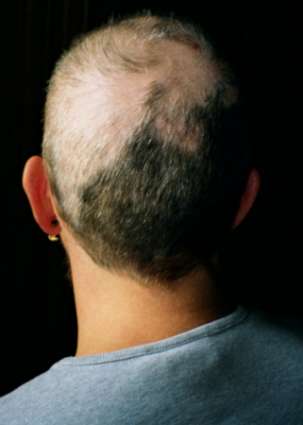An eating disorder is a mental disorder defined by abnormal eating behaviors that adversely affect a person's physical or mental health. Types of eating disorders include binge eating disorder, where the patient eats a large amount in a short period of time; anorexia nervosa, where the person has an intense fear of gaining weight and restricts food or overexercises to manage this fear; bulimia nervosa, where individuals eat a large quantity (binging) then try to rid themselves of the food (purging); pica, where the patient eats non-food items; rumination syndrome, where the patient regurgitates undigested or minimally digested food; avoidant/restrictive food intake disorder (ARFID), where people have a reduced or selective food intake due to some psychological reasons; and a group of other specified feeding or eating disorders. Anxiety disorders, depression and substance abuse are common among people with eating disorders. These disorders do not include obesity. People often experience comorbidity between an eating disorder and OCD. It is estimated 20–60% of patients with an ED have a history of OCD.

Trichotillomania (TTM), also known as hair-pulling disorder or compulsive hair pulling, is a mental disorder characterized by a long-term urge that results in the pulling out of one's own hair. A brief positive feeling may occur as hair is removed. Efforts to stop pulling hair typically fail. Hair removal may occur anywhere; however, the head and around the eyes are most common. The hair pulling is to such a degree that it results in distress and hair loss can be seen.

Hypochondriasis or hypochondria is a condition in which a person is excessively and unduly worried about having a serious illness. Hypochondria is an old concept whose meaning has repeatedly changed over its lifespan. It has been claimed that this debilitating condition results from an inaccurate perception of the condition of body or mind despite the absence of an actual medical diagnosis. An individual with hypochondriasis is known as a hypochondriac. Hypochondriacs become unduly alarmed about any physical or psychological symptoms they detect, no matter how minor the symptom may be, and are convinced that they have, or are about to be diagnosed with, a serious illness.
Orthorexia nervosa is a proposed eating disorder characterized by an excessive preoccupation with eating healthy food. The term was introduced in 1997 by American physician Steven Bratman, who suggested that some people's dietary restrictions intended to promote health may paradoxically lead to unhealthy consequences, such as social isolation, anxiety, loss of ability to eat in a natural, intuitive manner, reduced interest in the full range of other healthy human activities, and, in rare cases, severe malnutrition or even death.

Obsessive–compulsive personality disorder (OCPD) is a cluster C personality disorder marked by a spectrum of obsessions with rules, lists, schedules, and order, among other things. Symptoms are usually present by the time a person reaches adulthood, and are visible in a variety of situations. The cause of OCPD is thought to involve a combination of genetic and environmental factors, namely problems with attachment.
Clinical lycanthropy is a rare psychiatric syndrome that involves a delusion that the affected person can transform into, has transformed into, or is, a non-human animal. Its name is associated with the mythical condition of lycanthropy, a supernatural affliction in which humans are said to physically shapeshift into wolves.
Muscle dysmorphia is a subtype of the obsessive mental disorder body dysmorphic disorder, but is often also grouped with eating disorders. In muscle dysmorphia, which is sometimes called "bigorexia", "megarexia", or "reverse anorexia", the delusional or exaggerated belief is that one's own body is too small, too skinny, insufficiently muscular, or insufficiently lean, although in most cases, the individual's build is normal or even exceptionally large and muscular already.
Thought broadcasting is a type of delusional condition in which the affected person believes that others can hear their inner thoughts, despite a clear lack of evidence. The person may believe that either those nearby can perceive their thoughts or that they are being transmitted via mediums such as television, radio or the internet. Different people can experience thought broadcasting in different ways. Thought broadcasting is most commonly found among people who have a psychotic disorder, specifically schizophrenia.

Excoriation disorder, more commonly known as dermatillomania, is a mental disorder on the obsessive–compulsive spectrum that is characterized by the repeated urge or impulse to pick at one's own skin, to the extent that either psychological or physical damage is caused.
The obsessive–compulsive spectrum is a model of medical classification where various psychiatric, neurological and/or medical conditions are described as existing on a spectrum of conditions related to obsessive–compulsive disorder (OCD). "The disorders are thought to lie on a spectrum from impulsive to compulsive where impulsivity is said to persist due to deficits in the ability to inhibit repetitive behavior with known negative consequences, while compulsivity persists as a consequence of deficits in recognizing completion of tasks." OCD is a mental disorder characterized by obsessions and/or compulsions. An obsession is defined as "a recurring thought, image, or urge that the individual cannot control". Compulsion can be described as a "ritualistic behavior that the person feels compelled to perform". The model suggests that many conditions overlap with OCD in symptomatic profile, demographics, family history, neurobiology, comorbidity, clinical course and response to various pharmacotherapies. Conditions described as being on the spectrum are sometimes referred to as obsessive–compulsive spectrum disorders.
A spectrum disorder is a disorder that includes a range of linked conditions, sometimes also extending to include singular symptoms and traits. The different elements of a spectrum either have a similar appearance or are thought to be caused by the same underlying mechanism. In either case, a spectrum approach is taken because there appears to be "not a unitary disorder but rather a syndrome composed of subgroups". The spectrum may represent a range of severity, comprising relatively "severe" mental disorders through to relatively "mild and nonclinical deficits".
Olfactory reference syndrome (ORS) is a psychiatric condition in which there is a persistent false belief and preoccupation with the idea of emitting abnormal body odors which the patient thinks are foul and offensive to other individuals. People with this condition often misinterpret others' behaviors, e.g. sniffing, touching their nose or opening a window, as being referential to an unpleasant body odor which in reality is non-existent and cannot be detected by other people.

Tanning dependence or tanorexia is a syndrome where an individual appears to have a physical or psychological dependence on sunbathing or the use of ultraviolet (UV) tanning beds to darken the complexion of the skin. Compulsive tanning may satisfy the definition of a behavioral addiction as well.

Obsessive–compulsive disorder (OCD) is a mental and behavioral disorder in which an individual has intrusive thoughts and feels the need to perform certain routines (compulsions) repeatedly to relieve the distress caused by the obsession, to the extent where it impairs general function.
The differential diagnoses of anorexia nervosa (AN) includes various types of medical and psychological conditions, which may be misdiagnosed as AN. In some cases, these conditions may be comorbid with AN because the misdiagnosis of AN is not uncommon. For example, a case of achalasia was misdiagnosed as AN and the patient spent two months confined to a psychiatric hospital. A reason for the differential diagnoses that surround AN arise mainly because, like other disorders, it is primarily, albeit defensively and adaptive for, the individual concerned. Anorexia Nervosa is a psychological disorder characterized by extremely reduced intake of food. People with anorexia nervosa tend to have a low self-image and an inaccurate perception of their body.
In psychology, relationship obsessive–compulsive disorder (ROCD) is a form of obsessive–compulsive disorder focusing on close or intimate relationships. Such obsessions can become extremely distressing and debilitating, having negative impacts on relationships functioning.
Body image disturbance (BID) is a common symptom in patients with eating disorders and is characterized by an altered perception of one's own body.
David Mikael William Veale is a British psychiatrist. He is a visiting professor in cognitive behavioural psychotherapies at the Institute of Psychiatry, Psychology and Neuroscience, King's College London and a consultant psychiatrist at the South London and Maudsley NHS Foundation Trust. He has conducted a range of clinical research, especially in body dysmorphic disorder, obsessive–compulsive disorder, emetophobia, and depression.
Body checking is a compulsive behaviour related but not exclusive to various forms of body dysmorphic disorders. It involves frequently collecting various information about one’s own body in terms of size, shape, appearance or weight. Frequent expressions of this form of behaviour entails for example mirror checking, trying to feel one’s own bones, pinching the abdomen, frequent body weight measurement and comparing your own body to that of others. Studies have shown that an increased rate of body checking correlates with an overall increased dissatisfaction with the own body.

Snapchat dysmorphia, also known as "selfie dysmorphia", is a trending phenomenon used to describe patients who seek out plastic surgery in order to replicate and appear like their filtered selfies or altered images of themselves. The increasing availability and variety of filters used on social media apps, such as Snapchat or Instagram, allow users to edit and apply filters to their photos in an instant – blemish the skin, narrow the nose, enlarge the eyes, and numerous other edits to one's facial features. These heavily edited images create unrealistic and unnatural expectations of one's appearance, showing users a "perfected" view of themselves. The disconnection between one's real-life appearance and the highly filtered versions of oneself manifest into body insecurity and dysmorphia. The distorted perception of oneself can potentially evolve into an obsessive preoccupation with perceived flaws in one's appearance, a mental disorder known as body dysmorphic disorder. BDD has been classified as part of the obsessive-compulsive spectrum and it is currently affecting one in 50 Americans.







